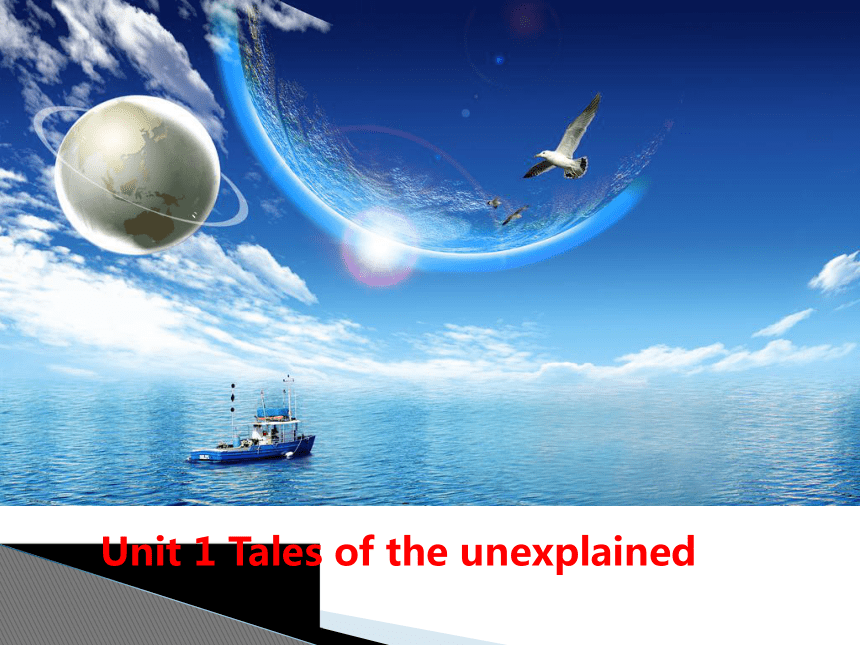
课件26张PPT。�Unit 1 Tales of the unexplainedWord powerUnidentified Flying ObjectsUFOaliens outer spaceBrainstorming space Universe beyond the earth’s atmosphere in which all other planets and stars existthe Earth the sunthe moon(satellite )artificial satellitesolar system orbit (man-made )Whether UFOs really exist has puzzled us for a long time. Have you ever thought about exploring space one day ?Travel into or through a place in order to learn about it.space exploration (space travel )Who is he ?Do you know where he is ?He is Yang Liwei, and he is an astronaut . spaceman / spacewoman space shuttle Shenzhou 5 manned spaceshipspace shuttle unmanned spaceshipPlacing a satellite into orbit requires a large amount of energy, which must come from the launch vehicle, or device that launches the satellite. The satellite needs to reach an altitude of at least 200 km (120 mi) and a speed of over 29,000 km/h (18,000 mph) to lift into orbit successfully. Satellites receive this combination of potential(势能) energy (altitude) and kinetic(动能) energy (speed) from multistage rockets burning chemical fuels.Apollo Eleven Countdown A rocket launch countdown. A common sound in the nineteen-sixties. But this was not just another launch. It was the beginning of an historic event. It was the countdown for Apollo Eleven -- the space flight that would carry men to the first landing on the moon. Two-and-one-half minutes after the Apollo Eleven launch, the first-stage rocket separated from the spacecraft. Twelve minutes later, the spacecraft reached orbit. Its speed was twenty-nine-thousand kilometers an hour. Its orbit was one-hundred-sixty-five kilometers above the Earth. This was the time for the crew to test all the spacecraft systems. Everything worked perfectly. So, the NASA flight director told them they were "go" for the moon. They fired the third-stage rocket. It increased the speed of the spacecraft to forty-thousand kilometers an hour. This was fast enough to escape the pull of the Earth's gravity. Apollo Eleven was on its way to the moon. In seventy-seven hours, if all went well, Apollo Eleven would be there. On July 20, 1969, American astronaut Edwin "Buzz" Aldrin, Jr. (pictured) became the second person to walk on the moon. Aldrin stepped onto the moon shortly after fellow Apollo 11 astronaut, Neil Armstrong. While millions of people on earth watched a televised broadcast of the event, Armstrong and Aldrin spent two hours exploring the lunar surface, gathering samples, taking photos, and setting up experiments. spaceship/spacecraftspace shuttle space station spacespacesuitspacewalk astronaut (spaceman/spacewoman)space explorationA. Person who travels in outer space B. Large manned artificial satellite used as a base for operations in space, e.g. for scientific research …C. Vehicle manned or unmanned for traveling in space D. Sealed suit covering the whole body and supplied with air , allowing the wearer to move about in space E. Manned spaceship design ... ...
~~ 您好,已阅读到文档的结尾了 ~~

